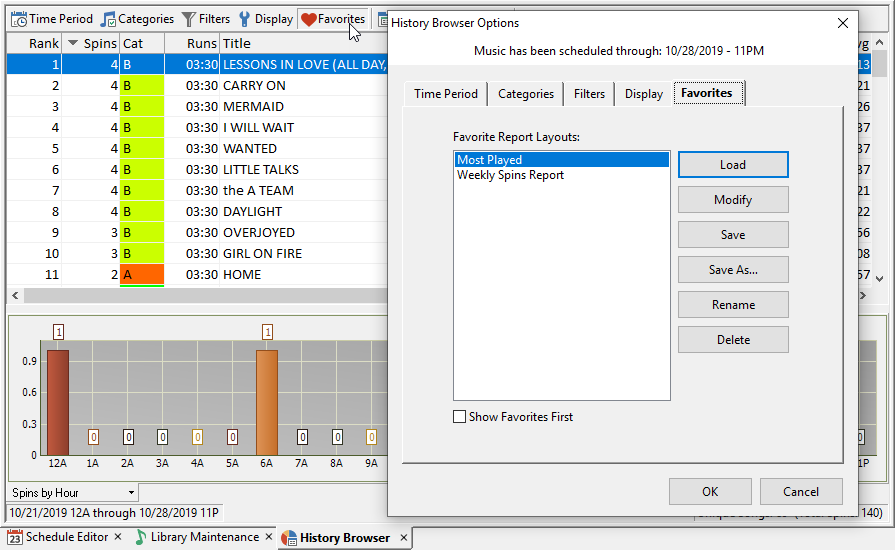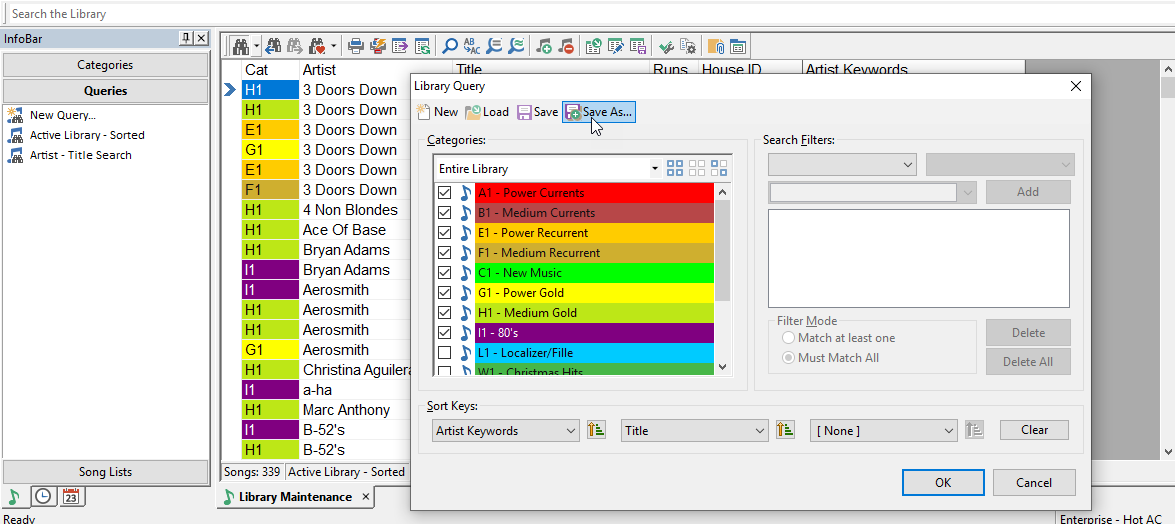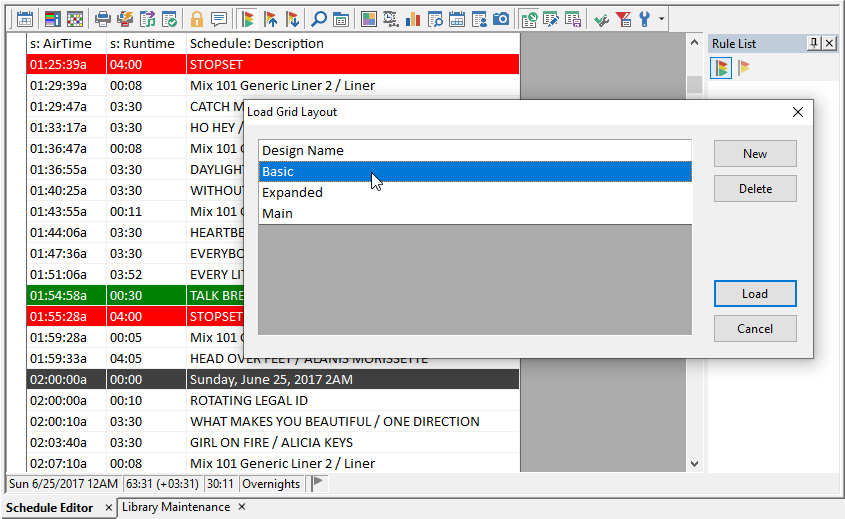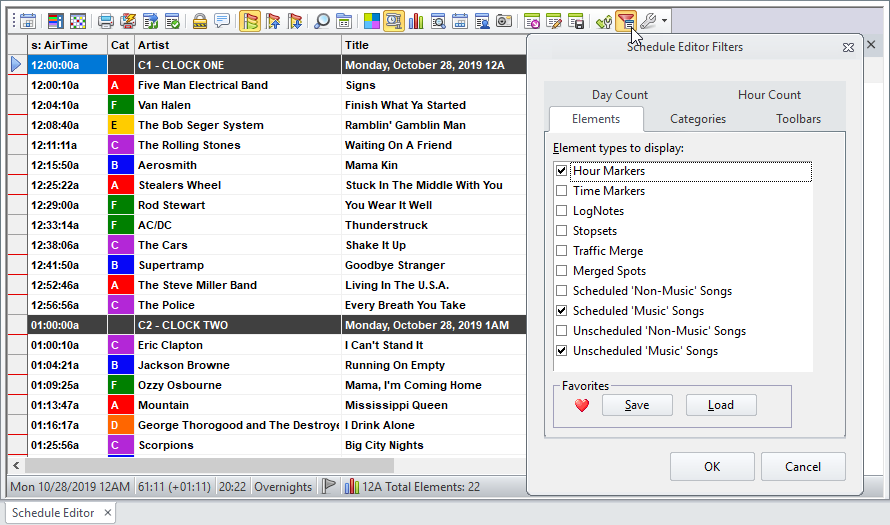MusicMaster Blog
Blog Archive
June- Importing/Exporting clocks within MusicMaster CS/Web Client
- Done with Dupes: ‘Multiple Categories’ in CS
Time Saving Tips – Part 1 posted on January 29th, 2020
Takin’ Care of Business – Part 1
Time-Saving Tips When You Don’t Have Enough Time
This is a guest article written by MusicMaster ProTeam consultant Kristopher Jones, Owner of M3 Merge Music Media. In this article, he shares some of his favorite time-saving tips in MusicMaster.
Time. We never seem to have enough of it. With all of the responsibilities of running a radio station (or several), the immediate demand of what’s urgent moves like a tsunami through the day, leaving a trail of debris and destruction in its wake.
Okay, maybe it’s not quite that bad, but it can be hard to find the time to sit down and focus on your music scheduling. “I just don’t have enough time” is something I hear from clients all the time.
I schedule music for a lot of radio stations, so knowing how to set up MusicMaster is critical for me to produce outstanding weekly music logs with confidence and efficiency. I’m a big believer in investing dedicated time up front knowing that the payoff will save me time every single week going forward. Think of it as ROTI – return on time investment.
Here’s part one of some of my favorite time-saving tips and tricks in MusicMaster.
Library – Saved Queries
If your MusicMaster routine includes selecting and sorting categories, the next time you do that, save it! Just click on the binocular icon, “Save As” and give it a name.
I have saved queries for my currents and recurrents, sorted by category, artist keyword and title for doing my weekly music adds and changes. I also have saved queries for my active library, sorted the same way, and another sorted just by artist keyword and title. Now, under the queries tab of the Info Bar on the left, all those saved queries are just double-click and go!
I have a variety of library grid layouts that I use for different tasks. This helps me eliminate the visual clutter and focus on what’s important. By clicking on the show/hide fields icon, you can select and arrange things how you want them and save that layout so you can quickly load it next time.
For example, when I’m doing my weekly music adds and changes, I double click the saved query I mentioned above and load my saved grid for that task, which shows important details like add date, move date, category spins and library spins.
I have another one just for coding (role, tempo, energy, sound, mood, era, etc.). I also have a saved grid layout that matches the “add new songs” layout in every database. That allows me to quickly copy and paste crossover songs from one format to another.
Schedule Editor – Favorite Query
I run my power recurrents and power gold categories pretty tight. I want those songs to get maximum exposure and always have great rotations. When a position goes unscheduled, it’s typically because hour rotation rules are protecting those rotations. Instead of compromising my rotations, I’ll fall back to my secondary category to fill the position. If you have your category rotations and hour rotation rules set correctly, you shouldn’t have too many of these to fill.
By double clicking the unscheduled position, then clicking on the binocular icon, you can check additional categories to test in the position. It works exactly the same as a saved query, “save as” and give it a name. Then, click the down arrow next to the binocular icon with the red heart and make your new saved query a “favorite.”
Next time you have to fill a power gold position with a secondary gold, just click the binocular heart icon all those additional songs will be immediately tested for that position. Find the best song for that position and go!
Just like with saved library grid views, you can save and load different layouts in the Schedule Editor as well. My goal is always to eliminate visual clutter so I can quickly see what I need to see to make decisions efficiently. Strip out anything that doesn’t serve that purpose.
This is another way to reduce visual clutter when you’re editing your logs. Here you can remove various non-music elements from the view so you can focus on the flow of the music. You can also isolate certain categories.
A common use of the History Browser is “Most Played” reports. Similarly to everything else, once you have made your Time Period, Categories and Display selections, save it as a “favorite” so it’s just a one click process every week.
I use the History Browser extensively as an analysis tool to check on the health of rotations, artist separations, coding and more. All are saved as favorites so I can quickly get a read on what’s happening in my databases and make adjustments if necessary.

There’s never enough time. Finding ways to shave the time it takes to do routine weekly tasks, or even more complicated analysis, buys you more time to focus on the quality of your work. If you take advantage of the tools available to you in MusicMaster, a little time investment up front will save you hours over the course of the year.
There are more time-saving tips and tricks in the schedule editor… I’ll save those for next time. If you have any questions, please feel free to reach out to me at the email address below. I’d love to hear from you!
“It’s the little details that are vital. Little things make big things happen.” – John Wooden






